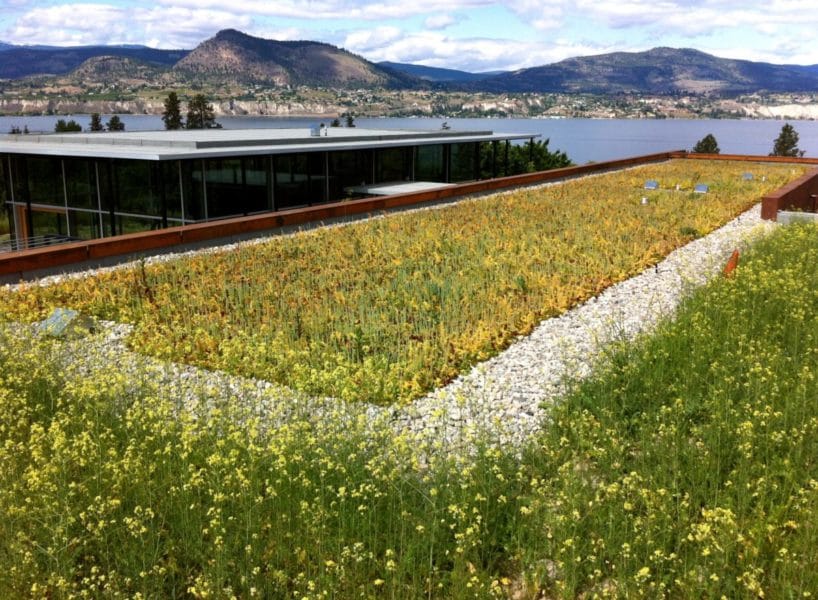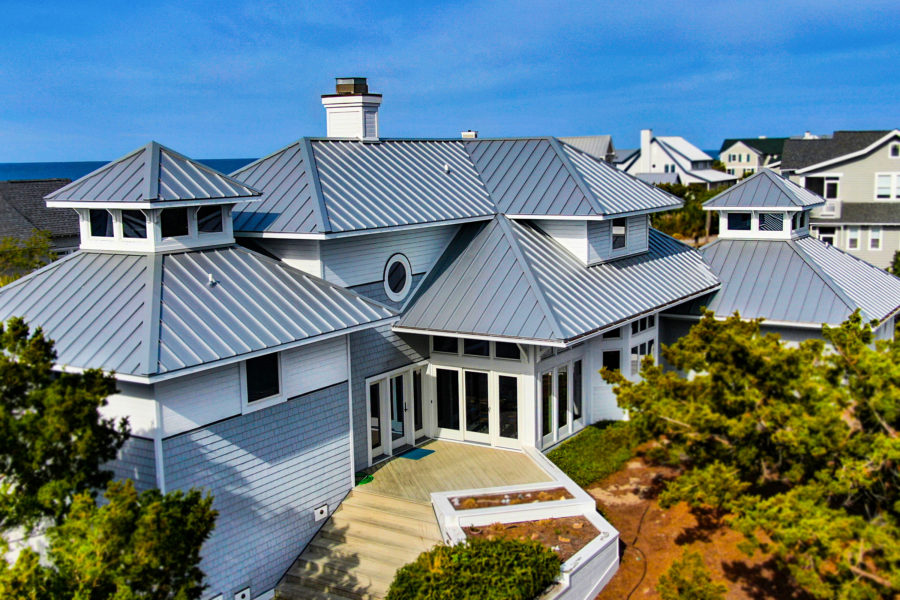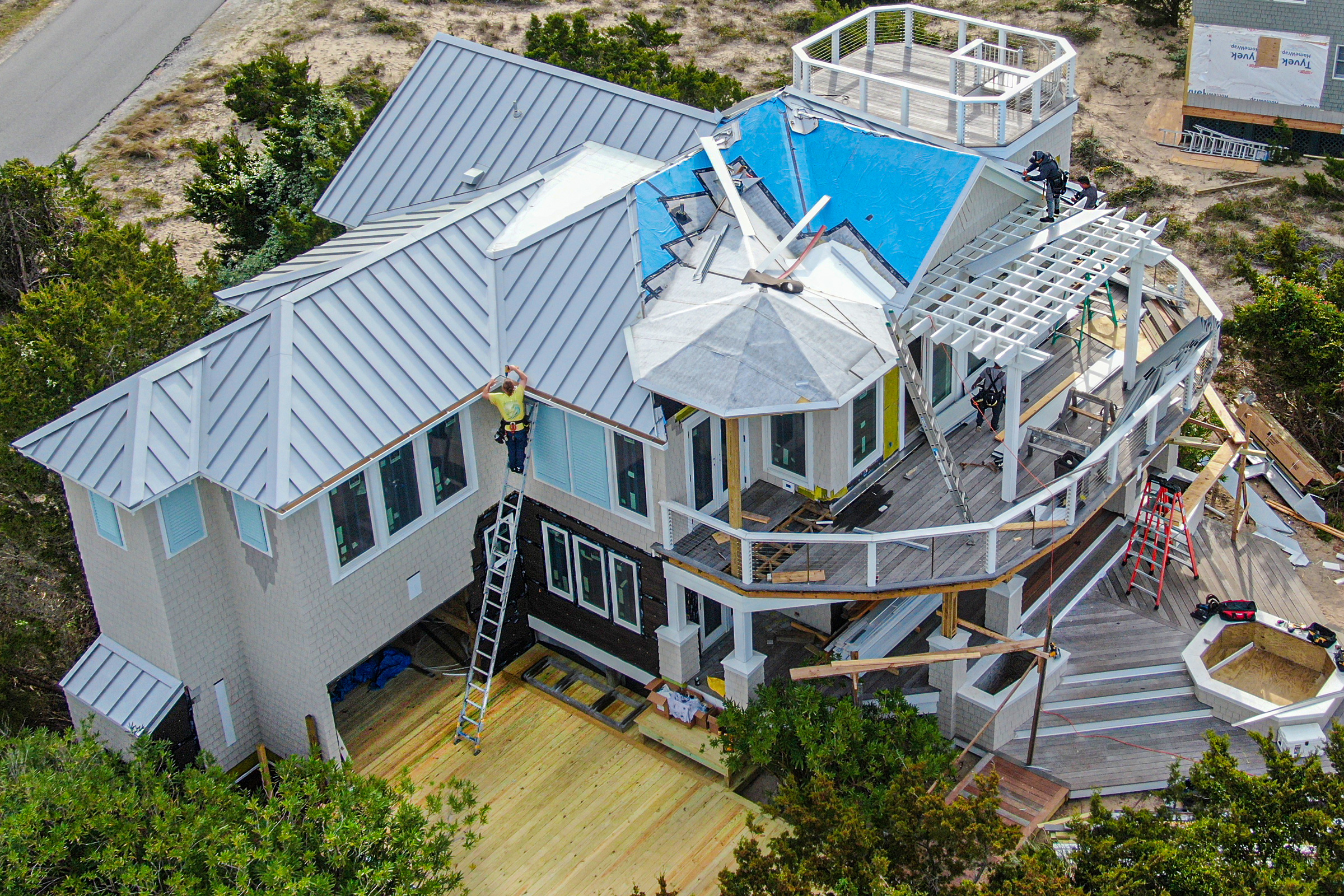LEED is perhaps the most popular green building certification rating system recognized by architects, designers, manufacturers, and builders today.
Buildings earn LEED points for everything from materials chosen to energy consumed, but how does roofing contribute?
According to the Global Roofing Group, there are four ways roofing can help you earn points toward LEED:
Sustainable Sites
1 point each

Green roof by Architek. Photo by Brett Ryan Studios
A vegetated roof, established with native plants, requiring minimal or no irrigation and little maintenance
A vegetated roof added in an urban setting
Vegetated roofs designed to control stormwater
Use of alternative surfaces to reduce pollutants and heat islands (vegetated, pervious pavement, grid pavers, etc.)
Vegetated roof for at least 50% of installation
Water Efficiency
2 to 4 points each
To earn points in this category, the green roofing system must be designed without permanent irrigation or minimal irrigation to reduce water use.
Reduce water use for irrigation by 50%
No irrigation, although temporary use of drip system to establish plants for 12 to 18 months is acceptable
100% reduction in water use and the percent reduction in total water use of structure are greater than 50%, the building earns all 6 points for the categories above
Energy and Optimization
May earn 19 points
The building designers must first establish a minimum level of energy efficiency before points can be earned in this category.
Add a vegetated roof and demonstrate percentage improvement in efficiency
Material and Resources
1 to 2 points each
Reuse building materials and products (5 to 10% of total value of materials) to reduce demand for virgin materials and reduce waste
Components like pavers, edging, and compost are from pre- and post-consumer materials (must contribute 10 to 20% of total value of the project), recycled content value is determined by weight
10 to 20% of materials must be manufactured and assembled within 500 miles of the building site
How Can Metal Roofing Help?

Photo courtesy of Englert
Manufacturer Englert says metal roofing plays a pivotal role in meeting LEED requirements for certification points.
Englert metal roofs help to reduce building energy consumption, as they’re more reflective than asphalt roof systems so they prevent more of the sun’s energy from being absorbed. They’re also an ideal platform for integrating photovoltaic and solar thermal renewable energy solutions.
Englert’s metal roof systems also emphasize both recycled content and recyclability. LEED points are available when specifying metal roofing (including one point for recycled content). Metal roofing is also 100% recyclable when removed for renovation or demolition.
“Unlike shingles or slate, metal roofing systems reflect sunlight back into the atmosphere instead of absorbing that heat. This can have a real impact on your electricity bills since it’ll require less air conditioning to cool your home,” says Jeff Barnard, in a previous gb&dPRO article. “On top of that, Englert has its own proprietary paint line, our ULTRA-Cool™ low gloss paint finishes, that meets LEED’s 2.2 Solar Reflective Index. And when you consider the fact a metal roof can last up to 80 years without needing to be replaced, it’s one of the most sustainable solutions on the market.”
Cool roofs also help to earn LEED points. “Cool roofs reflect heat well across the entire solar spectrum—especially in the infrared and visible wavelengths,” Barnard told gb&dPRO. “The less solar radiation materials absorb, the cooler they are. In addition to absorbing less heat, the coolest roofing materials radiate away any absorbed heat.”




